In the world of cookware, the quest for convenience and safety often goes hand in hand. With the rise of health-conscious consumers, the demand for non-stick coatings that are not only easy to use but also safe for the environment has become paramount. Enter the LFGB compliant non-stick coating, a game-changer that promises a healthier and more sustainable kitchen experience. This article delves into the intricacies of LFGB compliance, the technology behind non-stick coatings, and why they are a must-have for every kitchen.
The Importance of Non-Stick Coatings
Non-stick coatings have become an integral part of our daily lives, found in everything from cookware to bakeware. These innovative surfaces revolutionize the way we interact with our kitchen utensils, making cooking and cleaning a breeze. But what exactly is the significance of these coatings, and why are they so vital in today’s kitchen environment?
Firstly, non-stick coatings save us time and effort. Traditional cookware requires a lot of oil to prevent food from sticking, which can lead to greasy dishes and a lot of extra cleaning. With non-stick surfaces, a mere spritz of cooking spray or a small amount of oil is often sufficient, cutting down on the amount of fat we consume and reducing the workload in the kitchen. This convenience is especially appreciated by busy households or those who prefer quick and effortless cooking methods.
Moreover, non-stick coatings are incredibly user-friendly. They eliminate the need for scraping or scrubbing food from pots and pans, which can be both frustrating and time-consuming. Whether you’re a seasoned chef or a beginner in the kitchen, the ease of use offered by non-stick coatings can greatly enhance the cooking experience.
Another crucial aspect is the health benefits associated with non-stick coatings. Since less oil is needed, these coatings can help reduce the calorie and fat content of our meals. For those watching their weight or managing dietary restrictions, this feature is a game-changer. Additionally, non-stick surfaces can prevent the transfer of harmful chemicals from the cookware into our food, ensuring that we enjoy safe and healthy meals.
Furthermore, non-stick coatings contribute to the longevity of cookware. The smooth surface reduces the risk of scratches and wear, which can lead to rust and food contamination over time. This means that your pots and pans can last longer, and you’ll have fewer instances of replacing them due to damage.
The eco-friendly aspect of non-stick coatings cannot be overlooked either. With less oil being used, there’s a reduced environmental impact. Less oil also means less waste, which is a win for both the consumer and the planet.
When it comes to the manufacturing process, non-stick coatings must meet certain standards to ensure their effectiveness and safety. This is where LFGB compliance comes into play. LFGB, which stands for Lebensmittel- und Futtermittel-Bestimmungen (Food and Feed Regulations), is a set of stringent regulations that guarantee the safety of food contact materials in Germany and the European Union.
The LFGB standards cover a wide range of criteria, including the migration of chemicals from the coating into the food, the overall quality of the material, and the potential toxicity of the coating. Products that meet LFGB compliance are tested and certified to be safe for use in contact with food, giving consumers peace of mind.
One of the key reasons why LFGB compliant non-stick coatings are so important is the assurance they provide against harmful substances. The regulations are designed to prevent the migration of potentially toxic chemicals like PFOA (perfluorooctanoic acid) and PTFE (polytetrafluoroethylene) into the food, which can pose health risks over time.
In addition to safety, LFGB compliant non-stick coatings often boast excellent performance. The coatings are designed to withstand high temperatures, which means they can be used with a variety of cooking methods, including induction cooking. This versatility makes them a popular choice for cooks who enjoy experimenting with different techniques.
Another advantage of LFGB compliant non-stick coatings is their durability. The materials used in these coatings are resistant to scratches, wear, and fading, ensuring that your cookware remains effective and visually appealing for years to come.
When shopping for non-stick cookware, it’s essential to look for the LFGB logo or certification. This not only guarantees that the product meets the highest safety standards but also signifies that the manufacturer has taken the necessary steps to ensure the well-being of their customers.
In conclusion, the importance of non-stick coatings cannot be overstated. They simplify cooking, promote healthier eating habits, extend the life of cookware, and contribute to environmental sustainability. By choosing LFGB compliant non-stick coatings, consumers can rest assured that they are investing in products that are both safe and reliable. Whether you’re a health-conscious eater, a busy professional, or simply someone who appreciates a good meal, non-stick coatings, especially those that meet LFGB standards, are a valuable addition to any kitchen.
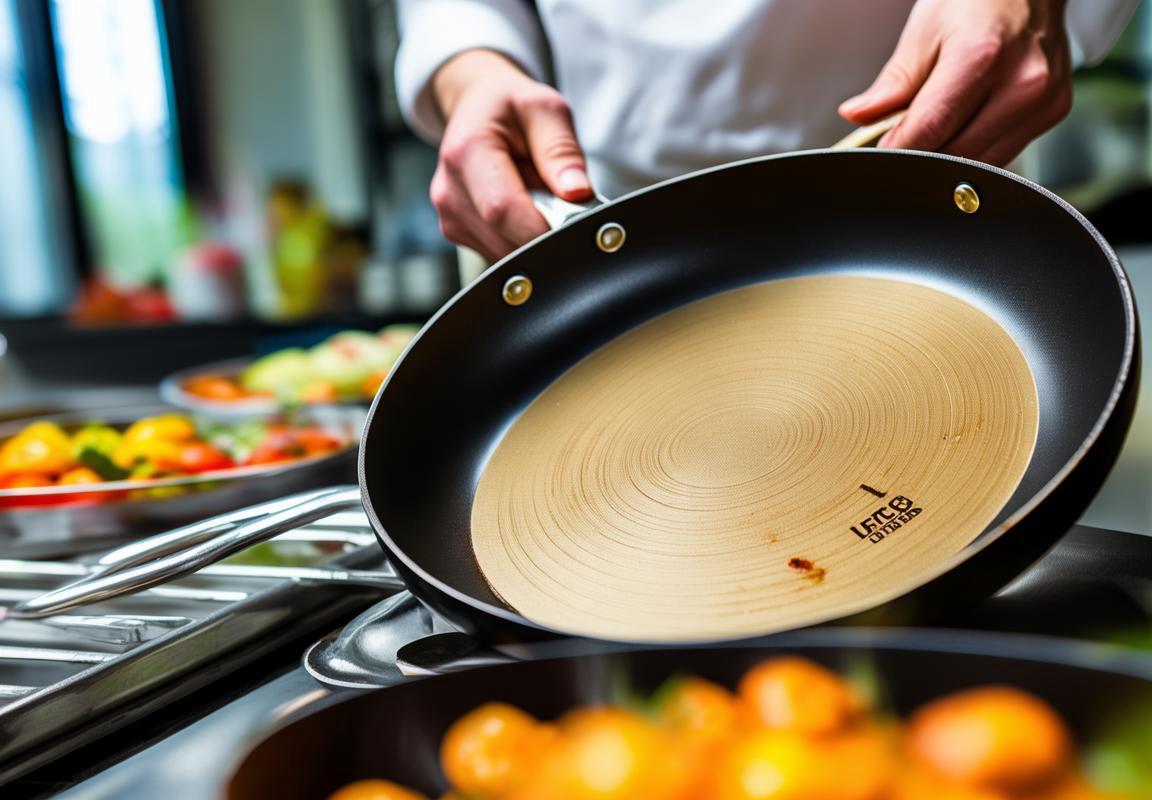
What is LFGB Compliance?
LFGB compliance is a crucial aspect in the manufacturing and distribution of food contact materials and products. It stands for “Limonene, Fluorinated Gases, Benzene, and other harmful substances,” and it is a set of stringent regulations established by the German government. These regulations are designed to ensure the safety of food products by setting limits on the presence of harmful substances in materials that come into contact with food.
The German LFGB regulations are particularly rigorous and are often considered a benchmark for food safety standards worldwide. They encompass a wide range of products, from kitchenware and packaging to food processing equipment and materials. The framework is divided into several key areas, each focusing on different aspects of safety.
One of the primary focuses of LFGB compliance is the migration of substances from packaging and cookware into food. This includes not only the intentional ingredients of the materials but also any unintended contaminants that might leach out over time. The regulations set strict limits on the amounts of substances such as lead, cadmium, mercury, and arsenic, which are known to be harmful to human health.
Another significant aspect of LFGB compliance is the testing and certification process. Manufacturers must conduct rigorous testing to ensure that their products meet the. This involves sampling the product and analyzing it for the presence of harmful substances using sophisticated analytical methods. The certification process is thorough and can be quite costly, but it is a testament to the manufacturer’s commitment to producing safe products.
The regulations also address the potential for harmful substances to be released under various conditions, such as high temperatures, prolonged storage, or mechanical stress. This means that materials must not only be safe when new but also maintain their safety throughout their intended lifespan. The LFGB compliance process requires manufacturers to simulate these conditions in their testing to ensure long-term safety.
One of the most notable aspects of LFGB compliance is the inclusion of substances that are not typically associated with food safety. For example, the regulations limit the use of certain plastics and adhesives due to the potential for them to release phthalates and bisphenol A (BPA) into food. These substances have been linked to various health issues, and the LFGB aims to prevent their migration into food products.
In addition to the strict limits on substances, LFGB compliance also involves ensuring that the materials used in food contact products are biologically inert. This means that the materials must not support the growth of bacteria or other microorganisms, which could contaminate food and lead to illness. The regulations cover the use of materials such as metals, ceramics, glass, and certain plastics, and they require that these materials do not react with food in a way that could pose a health risk.
The LFGB also addresses the issue of labeling. Products that are in compliance with the regulations must carry specific information on their packaging, including the name of the manufacturer, the batch number, and details about the material used. This transparency allows consumers to make informed choices about the safety of the products they purchase.
For companies that operate within the European Union, LFGB compliance is particularly important. While the EU has its own set of food safety regulations, known as the Framework Directive on Food Contact Materials and Articles (FCM), the LFGB is often seen as a stricter standard. Many EU member states recognize LFGB compliance as equivalent to their own regulations, making it a valuable certification for companies looking to export their products.
In conclusion, LFGB compliance is a comprehensive and rigorous set of regulations that go beyond the mere presence of harmful substances in food contact materials. It ensures that products are safe not only at the time of purchase but also throughout their use. By adhering to these standards, manufacturers demonstrate their commitment to consumer safety and the quality of their products.
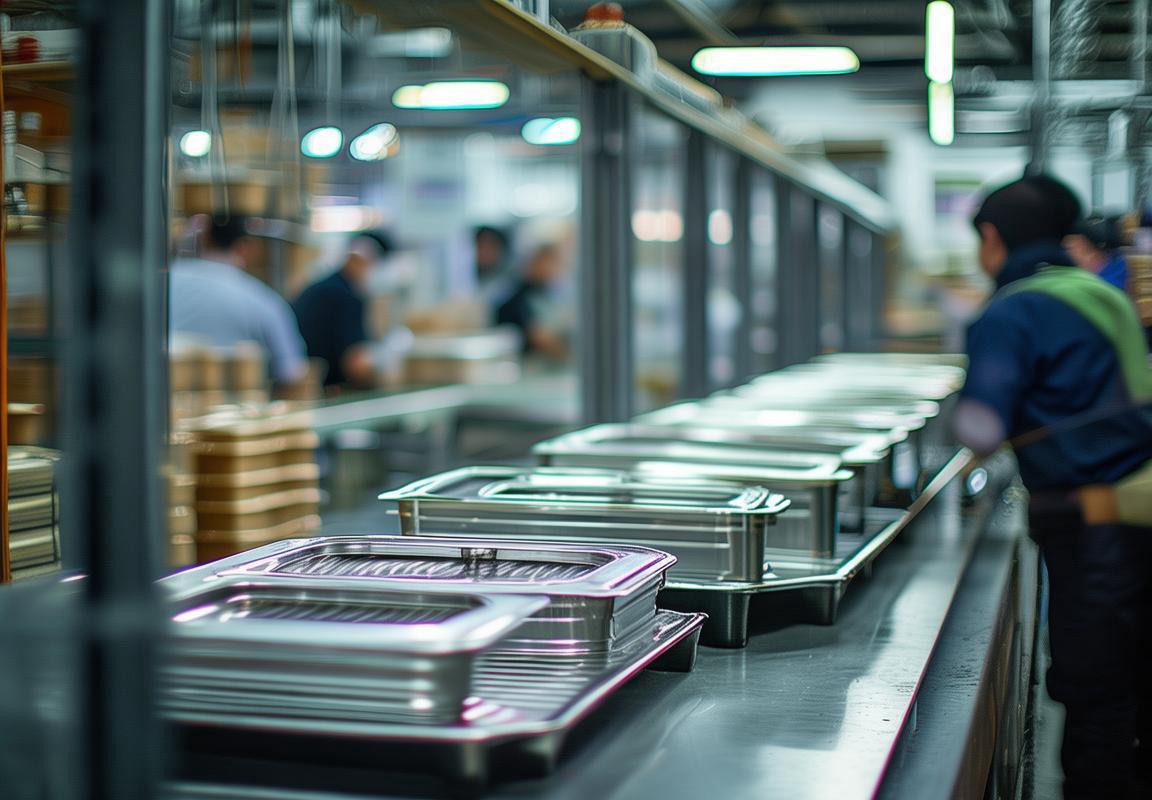
Understanding Non-Stick Coating Technology
Non-stick coatings have revolutionized the cooking experience, making kitchen tasks easier and more enjoyable. To appreciate the technology behind these wonder coatings, it’s essential to understand how they work and the science that makes them so effective.
The foundation of non-stick coating technology lies in a thin, uniform layer applied to the surface of cookware. This layer is typically made from a variety of materials, each with its unique properties. The most common non-stick materials include polytetrafluoroethylene (PTFE), also known as Teflon, polypropylene, and silicone.
PTFE is a synthetic polymer that has an extraordinary non-stick quality due to its molecular structure. The chemical bonds in PTFE are extremely strong and resistant to degradation, which means it won’t break down when exposed to heat, chemicals, or physical wear. This property is what gives non-stick cookware its name, as food barely sticks to the surface.
The non-stick process begins with preparing the cookware’s surface. Traditional methods involve sandblasting or chemical etching to create a rough texture that improves the adhesion of the coating. However, more eco-friendly options like plasma treatment are gaining popularity.
Once the surface is prepped, the non-stick material is applied. For PTFE, the process involves a chemical vapor deposition (CVD) or plasma-enhanced chemical vapor deposition (PECVD) process. In these methods, the coating material is vaporized and then deposited onto the cookware’s surface in a controlled atmosphere. The result is a layer that is incredibly thin—often less than one micron thick—yet highly durable.
The non-stick effect is not just about the material itself but also the manufacturing process. The coating must be applied evenly and without any bubbles or imperfections. This precision is crucial for ensuring that the cookware performs as intended. The coating also needs to be heat-resistant, which is why PTFE, with its melting point above 600 degrees Celsius, is often the material of choice.
Another aspect of non-stick coating technology is the use of coatings that are designed to be environmentally friendly. For example, some manufacturers have developed coatings that are free from PFOA (perfluorooctanoic acid), a chemical that has raised health concerns in the past. These new coatings still offer excellent non-stick properties but are considered safer for both the user and the environment.
The non-stick surface isn’t just about making cooking easier; it also contributes to healthier cooking habits. Since food doesn’t stick, there’s no need to use excessive amounts of oil or butter, reducing the fat content in your meals. This not only makes the dish healthier but also cuts down on the amount of fat that might clog your drains or contribute to kitchen fires.
The technology behind non-stick coatings has also led to innovations in cookware design. For instance, the sloped sides of non-stick pans make it easier to lift and turn food without spilling. The smooth surface also allows for quick and even heat distribution, which means food cooks more efficiently and consistently.
Despite the many benefits, it’s important to note that non-stick coatings are not indestructible. Over time, they can wear down, especially if the cookware is used improperly or subjected to high heat. It’s also crucial to avoid metal utensils, as they can scratch the coating and potentially release particles into the food. Proper care and maintenance, such as hand washing and avoiding abrasive cleaners, can significantly extend the life of the coating.
In conclusion, non-stick coating technology is a marvel of modern material science. It’s a testament to human ingenuity that we can create a surface so non-reactive and durable, making cooking a more enjoyable and healthful experience. Whether it’s the convenience of easy clean-up or the peace of mind that comes with healthier cooking, the non-stick coating is an indispensable part of many kitchens around the world.
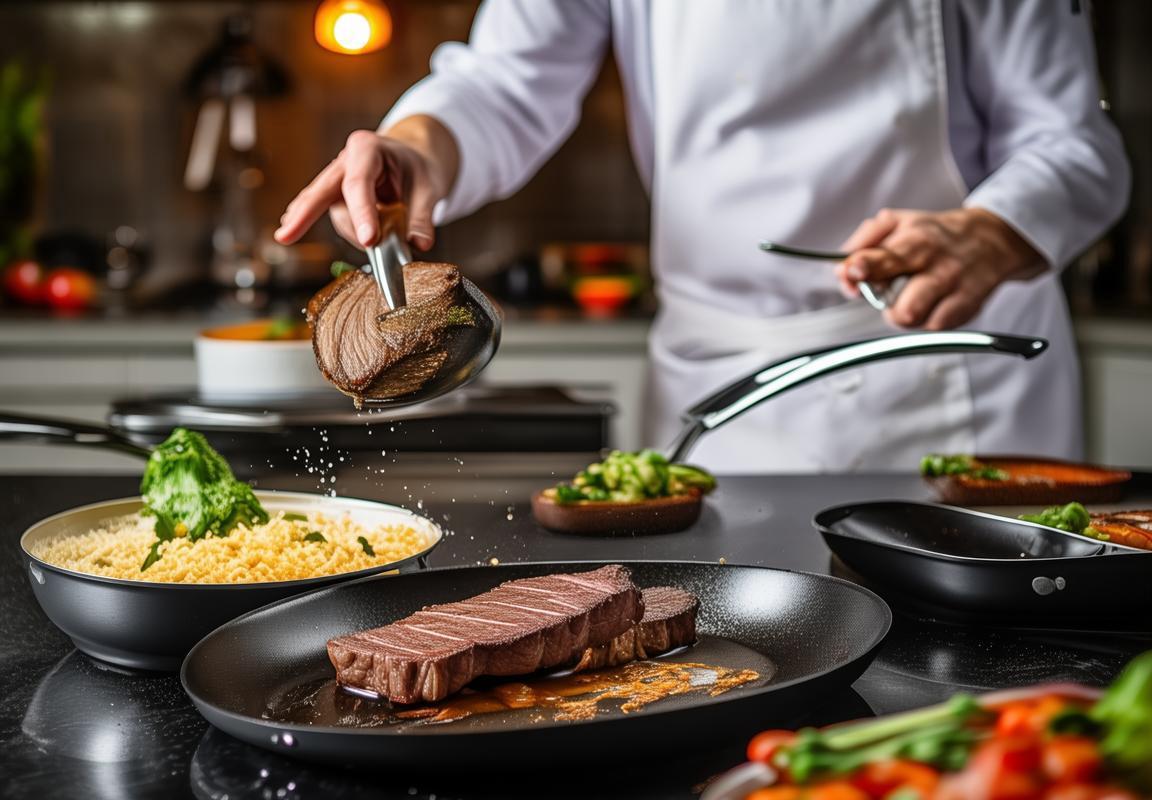
The Benefits of LFGB Compliant Non-Stick Coatings
Non-stick coatings have become a staple in the kitchen, offering convenience and ease when it comes to cooking. But what makes LFGB compliant non-stick coatings stand out from the rest? Here’s a deeper dive into the advantages they bring to your cooking experience:
Enhanced DurabilityOne of the standout benefits of LFGB compliant non-stick coatings is their remarkable durability. These coatings are designed to withstand the rigors of regular use, including high heat and frequent cleaning. Unlike some cheaper alternatives, LFGB compliant coatings are less prone to peeling or flaking, ensuring that your cookware remains effective and looks pristine for longer.
Health and SafetySafety is paramount when it comes to kitchenware, and LFGB compliant non-stick coatings take this seriously. LFGB stands for Lebensmittel- und Bedarfsgegenstände (Food, Feed and Consumer Goods) and is a set of stringent regulations in Germany that cover the safety of materials used in food contact items. These coatings are free from harmful chemicals like PFOA and PTFE, which can potentially leach into food at high temperatures. This means you can cook with peace of mind, knowing that your non-stick surface is safe for you and your family.
Superior Non-Stick PerformanceThe primary appeal of non-stick coatings is their ability to prevent food from sticking to the cookware, which reduces the need for excessive oil or butter. LFGB compliant non-stick coatings are engineered to provide a smooth, even surface that allows for easy food release. This not only makes cleaning up a breeze but also promotes healthier cooking habits by minimizing the amount of fat and calories in your meals.
Improved Cooking EfficiencyBecause non-stick coatings reduce the need for oils, they can also enhance cooking efficiency. With less fat, your food cooks more evenly and quickly. This is particularly beneficial for delicate ingredients like fish and eggs, which can become overcooked or dried out on traditional cookware. LFGB compliant coatings maintain a consistent cooking surface, ensuring that your food is perfectly cooked every time.
Ease of CleaningOne of the most appreciated aspects of non-stick cookware is how easy it is to clean. The non-stick properties mean that you can wash dishes in less time and with less effort. This is not just a time-saver; it also means fewer opportunities for food particles to harbor bacteria. LFGB compliant coatings are designed to withstand cleaning agents and hot water without losing their effectiveness, making the entire cleaning process a hassle-free experience.
Versatility in Cooking MethodsNon-stick coatings are versatile, allowing you to use a variety of cooking techniques without worrying about damaging the surface. Whether you’re sautéing, frying, or boiling, LFGB compliant coatings can handle the heat and provide a non-reactive surface that won’t impart flavors to your food. This versatility means you can experiment with different recipes and cooking styles without compromise.
Longevity and Eco-FriendlinessInvesting in LFGB compliant non-stick cookware can be a wise decision for the long term. These coatings are designed to last, which means you won’t have to replace your cookware as often. This not only saves you money but also reduces the amount of kitchenware that ends up in landfills. By choosing non-stick cookware with LFGB compliance, you’re making a choice that aligns with eco-friendly practices.
Cost-Effective CookingLastly, non-stick cookware with LFGB compliance can lead to cost savings in the kitchen. The efficient cooking process means you use less energy and less oil, which can add up to significant savings over time. Plus, with the ease of cleaning and reduced likelihood of food waste, you’re not just saving money on energy and oil; you’re also cutting down on the cost of buying new ingredients.
In summary, LFGB compliant non-stick coatings offer a blend of performance, safety, and convenience that makes them a popular choice among home cooks and professional chefs alike. From their durable and non-reactive surfaces to their health benefits and eco-conscious design, these coatings are a smart investment for any kitchen.
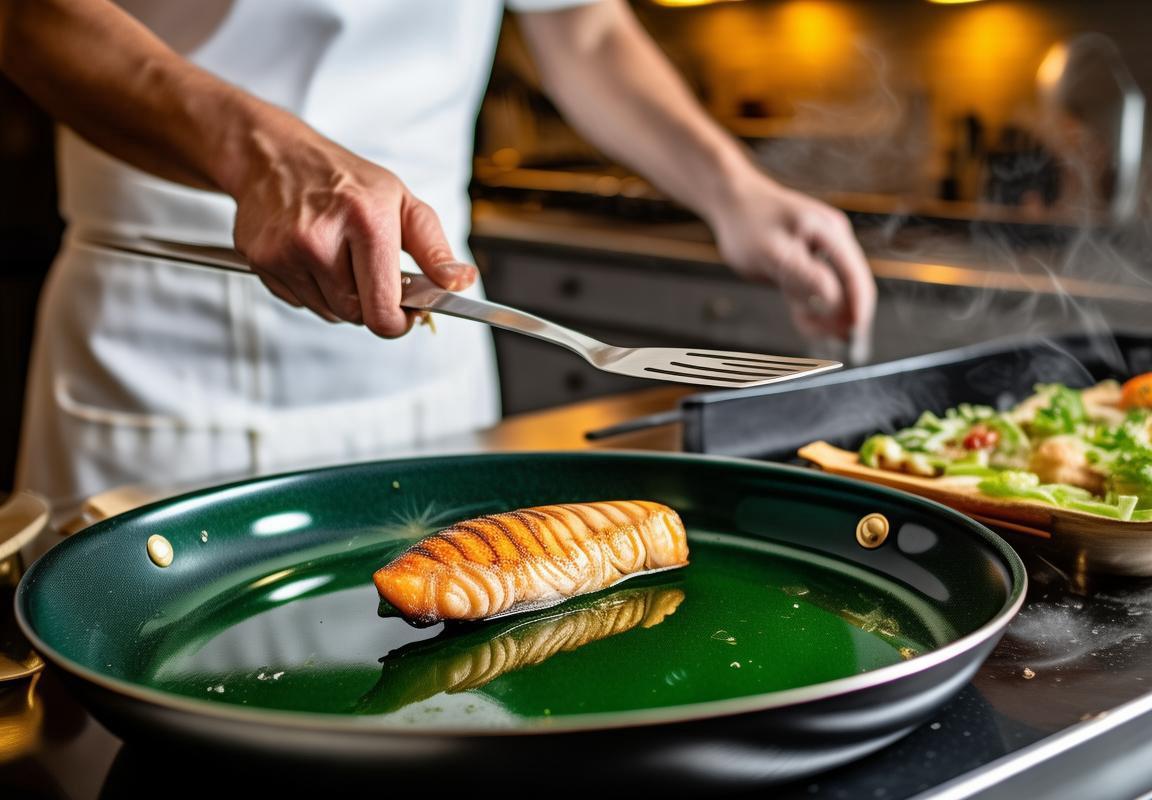
How LFGB Compliance Ensures Safety
LFGB compliance is a critical aspect of ensuring safety in products, particularly in the realm of non-stick coatings. This German regulation, known as the Lebensmittel- und Bedarfsgegenstände-Hygieneverordnung (Law on Hygiene for Food and Consumer Goods), is designed to protect consumers from harmful substances and guarantee the safety of products intended for human use. Here’s how LFGB compliance plays a pivotal role in ensuring safety:
In the world of non-stick coatings, the presence of harmful chemicals can be a significant concern. LFGB compliance addresses this by setting strict limits on the levels of substances like PFOA (perfluorooctanoic acid), PFOS (perfluorooctanesulfonic acid), and other perfluorinated compounds (PFCs) that are often found in traditional non-stick coatings. These chemicals have been linked to various health issues, including cancer and reproductive problems.
Regular testing and certification are essential components of LFGB compliance. Manufacturers must undergo rigorous assessments to ensure that their products meet the stringent safety standards outlined in the regulation. This includes not only the non-stick coating itself but also the materials used in the manufacturing process. By adhering to these standards, companies can confidently assure consumers that their products are safe to use.
One of the key benefits of LFGB compliant non-stick coatings is the peace of mind they offer. Consumers can cook with these products knowing that they are not exposed to potentially harmful substances. This is especially important for families with young children, who may be more susceptible to the negative effects of toxic chemicals. The assurance of safety is a significant selling point for many consumers, leading to increased trust in the brand.
The health and safety of consumers are paramount, and LFGB compliance helps to safeguard against the introduction of allergens and contaminants into food. Non-stick coatings that meet LFGB standards are less likely to release particles into food, reducing the risk of allergic reactions or foodborne illnesses. This is particularly relevant for individuals with sensitivities or allergies to certain materials.
The environmental impact of non-stick coatings is another area where LFGB compliance makes a difference. By limiting the use of harmful chemicals, the regulation helps to reduce the environmental footprint of these products. This not only protects wildlife and ecosystems but also aligns with the growing demand for sustainable and eco-friendly consumer goods.
LFGB compliant non-stick coatings often last longer than their less stringent counterparts. This durability is a result of the high-quality materials and manufacturing processes required to meet the safety standards. Longer-lasting products mean fewer replacements, which is not only cost-effective for consumers but also reduces waste.
The certification process itself serves as a barrier to entry for manufacturers who do not prioritize safety. Only those who are committed to producing safe, high-quality products can obtain LFGB certification. This selective process helps to maintain a level of quality and trust within the market, ensuring that consumers can rely on the brand.
In the event of a product recall or safety issue, LFGB compliance can be a lifesaver. Products that are LFGB certified are less likely to contain harmful substances, reducing the risk of recalls due to safety concerns. This not only protects consumers but also saves manufacturers from the costly and damaging effects of a recall.
LFGB compliance is not just a regulatory requirement; it’s a commitment to quality and safety. For non-stick coatings, this means that the products are not only free from harmful chemicals but also designed to last, reduce environmental impact, and provide a safe cooking experience. Consumers can rest easy knowing that the non-stick pans, skillets, and cookware they choose are not just convenient, but also safe for their health and the environment.

Common Applications of LFGB Compliant Coatings
In the realm of everyday products, LFGB compliant coatings have found their way into a myriad of applications, enhancing safety and convenience. From kitchenware to medical devices, these coatings are a testament to the meticulous attention to detail required in manufacturing. Here’s a closer look at some of the common uses of LFGB compliant coatings:
-
Cookware: Non-stick cookware is a staple in many kitchens, and LFGB compliance ensures that the coatings used are safe for food contact. These coatings are found on pans, skillets, and baking sheets, making cooking and cleaning a breeze. The non-stick properties not only prevent food from sticking but also reduce the need for excessive oil, promoting healthier cooking habits.
-
Bakeware: The same non-stick technology that graces cookware is also applied to bakeware. Muffin tins, loaf pans, and cake pans with LFGB compliant coatings are designed to make baking easier and more enjoyable. These coatings prevent baked goods from sticking to the surface, allowing for seamless release and less waste.
-
Grilling Tools: Grills and grill tools often require a non-stick surface to prevent food from adhering during cooking. LFGB compliant coatings on these items ensure that the materials used are safe, even when exposed to high temperatures and direct contact with food.
-
Kitchen Utensils: Many kitchen utensils, like spatulas, whisks, and tongs, are coated with materials that meet LFGB standards. These coatings provide a non-slip grip and can withstand the heat of cooking, making them durable and safe for everyday use.
-
Medical Devices: In the medical field, LFGB compliant coatings are crucial for ensuring the safety of patients. These coatings are used on medical instruments, such as surgical tools and catheters, to prevent contamination and maintain sterility. The materials used must be biocompatible and not react with the human body, making them essential for medical devices that come into contact with blood and bodily fluids.
-
Automotive Industry: The automotive industry also benefits from LFGB compliant coatings. These coatings are used on interior trim pieces, dashboard covers, and other components that come into contact with passengers. The materials must be free from harmful substances and resistant to heat and chemicals, ensuring a safe environment for drivers and passengers.
-
Children’s Toys: Children’s toys often require coatings that are not only durable but also safe. LFGB compliant coatings are used to cover plastic toys, ensuring that they do not contain harmful chemicals that could leach into the child’s environment. These coatings also provide a smooth surface to prevent cuts and injuries.
-
Textiles: In the textile industry, LFGB compliant coatings are used to create water-resistant and stain-resistant fabrics. These coatings are applied to outdoor clothing, camping gear, and even some home textiles, providing protection against the elements without compromising the fabric’s breathability.
-
Sports Equipment: Sports equipment like golf clubs, tennis rackets, and bicycles often feature LFGB compliant coatings. These coatings can provide a non-slip grip, improve durability, and even offer UV protection for materials exposed to the sun.
-
Industrial Applications: LFGB compliant coatings are not limited to consumer goods; they are also used in industrial settings. Coatings on industrial equipment and machinery must meet strict safety standards to protect workers from potential hazards and to ensure the longevity of the equipment.
The widespread use of LFGB compliant coatings across various industries underscores their importance in ensuring product safety. These coatings provide a protective barrier that not only enhances the usability of products but also reassures consumers that the items they use daily are free from harmful substances. Whether it’s in the kitchen, on the road, or in the medical field, LFGB compliant coatings play a vital role in creating a safer and more reliable world.
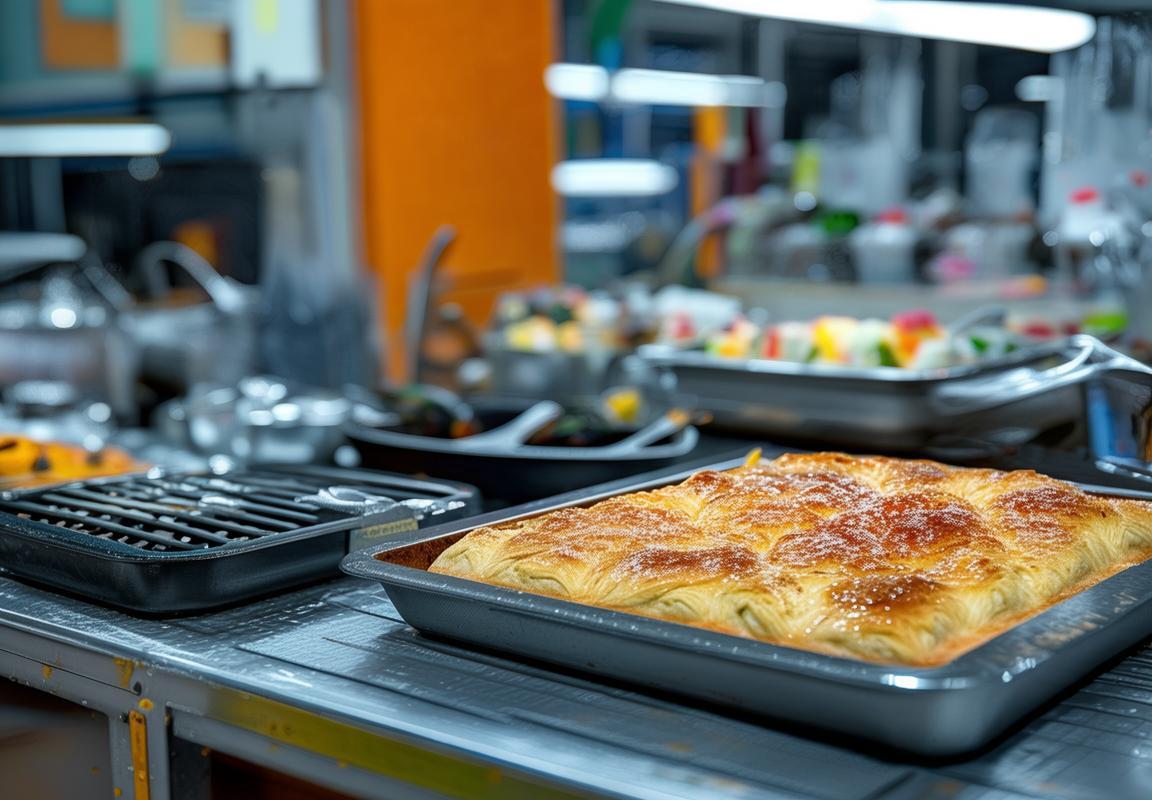
The Process of LFGB Certification
The certification process for LFGB compliance is a meticulous and comprehensive journey that ensures products meet stringent safety and quality standards. It involves several key steps, each designed to guarantee that the coatings are safe for use, environmentally friendly, and meet the highest health and safety requirements.
Testing and AnalysisBefore a coating can be deemed LFGB compliant, it must undergo rigorous testing to assess its composition and performance. This includes chemical analysis to detect the presence of harmful substances such as heavy metals, flame retardants, and phthalates. Independent laboratories conduct these tests, using precise methods to measure the levels of these substances.
Material EvaluationThe materials used in the non-stick coating must be evaluated for their compatibility with the LFGB standards. This involves examining the raw materials, their sourcing, and the manufacturing process. The evaluation looks at the potential for leaching of chemicals into food and the overall stability of the coating over time.
Safety AssessmentsSafety assessments are a crucial part of the LFGB certification process. This involves determining the potential health risks associated with the coating, including long-term exposure. Toxicological studies are conducted to evaluate the absorption, distribution, metabolism, and excretion of any chemicals present in the coating. These assessments help to ensure that the coating does not pose any health hazards to consumers.
Regulatory ComplianceThe manufacturer must demonstrate that the coating complies with all relevant legal requirements. This includes adherence to the German Food, Drugs, and Cosmetics Act (LFGB) as well as other international regulations. Compliance involves not only the coating itself but also the entire production process, from raw materials to finished product.
DocumentationExtensive documentation is required to prove compliance with LFGB standards. This includes detailed records of the manufacturing process, the testing results, the safety assessments, and the regulatory compliance. Manufacturers must maintain these documents for a specified period, typically five years, to provide evidence of ongoing compliance.
Audits and InspectionsRegular audits and inspections are conducted by certified bodies to ensure that the manufacturer continues to adhere to LFGB standards. These audits can be announced or unannounced and may include a review of the facility, the manufacturing process, the quality control measures, and the documentation. Passing these audits is essential to maintaining certification.
Certification GrantingOnce all the necessary tests, assessments, and audits have been successfully completed, the certification body will grant the LFGB compliance certification. This certification is a testament to the manufacturer’s commitment to safety and quality and is often required by retailers and consumers alike.
Continuous ImprovementThe LFGB certification process also emphasizes continuous improvement. Manufacturers are encouraged to review and enhance their processes, seeking ways to further reduce the presence of harmful substances and improve product safety. This ongoing commitment to improvement is a key component of the LFGB certification.
In conclusion, the process of LFGB certification is a multifaceted endeavor that requires a deep understanding of safety, quality, and legal compliance. It ensures that non-stick coatings are not only effective but also safe for consumers, protecting their health and well-being.

Choosing LFGB Compliant Non-Stick Cookware
Understanding the importance of LFGB compliance in non-stick cookware is crucial for making informed decisions. When selecting LFGB compliant non-stick cookware, there are several factors to consider that ensure both the quality and safety of your kitchenware. Here’s what you need to know:
-
Look for the LFGB Logo: When shopping for non-stick cookware, the first thing to do is to seek out products that proudly display the LFGB (Legislation on the Implementation of the German Food, Drug, and Cosmetic Act) logo. This certification guarantees that the cookware meets stringent safety standards set by German law.
-
Material Quality: LFGB compliant non-stick coatings are typically made from high-quality materials that are free from harmful chemicals. This means that the cookware is not only safe to use but also durable and long-lasting. High-grade materials ensure that the non-stick surface remains effective over time.
-
Health and Safety: The LFGB standard is particularly strict when it comes to the health and safety of consumers. It ensures that non-stick cookware does not leach harmful substances into food, such as PFOA (perfluorooctanoic acid), PFOS (perfluorooctanesulfonic acid), and other toxic chemicals that have been linked to health issues.
-
Cooking Performance: Cookware with LFGB compliant non-stick coatings offers a range of benefits in the kitchen. The non-stick surface allows for easier food release, reducing the need for excessive oil or butter, which can be healthier for your diet. It also makes cooking and cleaning much simpler, as food doesn’t stick to the pan and cleaning is a breeze.
-
Durability: A well-made non-stick pan with LFGB compliance is designed to last. The coating is applied evenly and thickly to withstand regular use and high temperatures without peeling or flaking. This durability means that your cookware will be a valuable addition to your kitchen for years to come.
-
Versatility: LFGB compliant non-stick cookware is versatile and suitable for a variety of cooking methods. Whether you’re searing, sautéing, or simmering, these pans can handle it all. The non-stick properties make it easy to cook delicate foods like eggs and fish without the risk of breaking them.
-
Eco-Friendly: Choosing LFGB compliant non-stick cookware can also be an eco-friendly choice. High-quality materials and durable construction mean that these pans are less likely to end up in landfills due to premature wear and tear. Plus, the healthier cooking options can contribute to a more sustainable lifestyle.
-
Budget Considerations: While LFGB compliant non-stick cookware may be on the pricier side, it’s an investment in your health and kitchen. The peace of mind that comes with knowing your cookware is safe and effective can be invaluable. Look for sales, discounts, or consider purchasing a set rather than individual pieces to make the cost more manageable.
-
Brand Reputation: When selecting LFGB compliant non-stick cookware, it’s wise to check the reputation of the brand. Look for manufacturers with a history of producing high-quality, reliable products. Reading reviews and seeking recommendations from friends and family can help you make an informed choice.
-
Maintenance: To keep your LFGB compliant non-stick cookware in top condition, follow the manufacturer’s care instructions. Avoid using metal utensils that can scratch the surface, and don’t put the pan in the dishwasher, as the high heat can damage the coating. Hand washing with warm, soapy water is usually sufficient to maintain the non-stick properties.
Remember, when choosing LFGB compliant non-stick cookware, you’re not just buying a pan; you’re investing in a healthier, more convenient, and longer-lasting kitchen tool. Take the time to research and select a product that meets your needs and exceeds your expectations.

Conclusion: A Safer Choice for Every Kitchen
In the realm of kitchenware, choosing LFGB compliant non-stick cookware is a decision that promises a safer and healthier cooking experience. This choice goes beyond mere preference, as it encompasses a range of benefits that cater to both the user and the environment. Here’s why LFGB compliant non-stick cookware stands out and why it’s a safer choice for every kitchen.
Cooking, a fundamental aspect of life, requires the right tools. LFGB compliant non-stick cookware offers an array of features that make it a favorite among both professional chefs and home cooks. The non-stick surface is a game-changer, reducing the need for excessive oil or butter, which not only makes cooking healthier but also easier. The ease of food release from the pan means fewer food particles sticking to the surface, leading to a cleaner cooking environment.
The health benefits of LFGB compliant non-stick coatings are substantial. These coatings are designed to minimize the transfer of potentially harmful chemicals into food. Unlike older coatings that could leach harmful substances, the LFGB standard ensures that the non-stick surfaces are free from PFAS (per- and polyfluoroalkyl substances), PFOA (perfluorooctanoic acid), and other toxic substances. This means that the food you prepare is not only delicious but also safe to consume.
Durability is another key advantage of LFGB compliant non-stick coatings. These coatings are engineered to withstand high temperatures and maintain their non-stick properties over time. This longevity means that your cookware can last for years, reducing the need for frequent replacements and the environmental impact of disposing of old cookware.
In a kitchen filled with various gadgets and utensils, the ease of cleaning is a vital factor. LFGB compliant non-stick cookware simplifies the cleaning process. With food easily releasing from the surface, there’s less need for scrubbing or soaking, saving water and energy. This ease of maintenance also extends the life of the cookware, as it reduces the risk of wear and tear.
When it comes to convenience, LFGB compliant non-stick cookware is a clear winner. The non-stick surface allows for a variety of cooking techniques without the risk of burning or sticking. This versatility means you can sear, fry, sauté, and bake with confidence, knowing that your cookware will perform consistently.
The environmental impact of kitchenware is a growing concern. LFGB compliant non-stick coatings are often more sustainable than traditional non-stick coatings. They are designed to be more durable, which means they can be used for a longer period before needing to be replaced. This reduces the demand for new products and the subsequent waste associated with manufacturing and disposal.
For those with specific dietary needs or allergies, LFGB compliant non-stick cookware offers a solution. The absence of harmful substances means that individuals with sensitivities to certain chemicals can use these cookware items without worry. This inclusivity in kitchenware is a testament to the evolving standards that prioritize the well-being of all users.
In the realm of kitchenware manufacturing, adherence to the LFGB standard is a mark of quality and trust. The certification process involves rigorous testing and compliance checks, ensuring that each piece of cookware meets the stringent safety requirements. This level of oversight gives consumers peace of mind, knowing that their purchase is not just a product but a promise of safety.
In the end, the choice of LFGB compliant non-stick cookware for every kitchen is a choice that reflects a commitment to safety, health, and the environment. It’s a choice that aligns with the modern consumer’s desire for quality and sustainability. Whether you’re a seasoned chef or a beginner in the kitchen, investing in LFGB compliant non-stick cookware is an investment in your cooking experience and your well-being. From the ease of cooking to the peace of mind that comes with knowing your cookware is safe, it’s clear why this type of cookware is becoming the preferred choice for many.